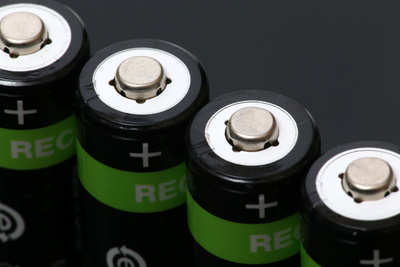During the two-day congress, more than 20 experts spoke on various topics to almost 200 participants. Lithium-ion batteries were repeatedly the focus of many of the lectures. The high-performance batteries currently provide energy in particular for a host of mobile electronic devices such as smartphones and digital cameras. Last year, around 1.8 billion mobile telephones, 230 million tablets and 170 million notebooks were sold worldwide and the trend for the years to come points upwards. According to Christophe Pillot, CEO of the French market research institute Avicenne Energy, between 2010 and 2025, the demand for mobile telephones is forecast to rise by an average of 6 per cent per year.
Consequently, demand for lithium-ion batteries is also multiplying. Whereas in the year 2000, this type of battery provided 2 GWh of energy, the figure had already risen to 46 GWh by 2014, explained Pillot. Nevertheless, lead-acid batteries still account for the majority of market share by far and still comprised 90 per cent last year.
In future, lithium-ion batteries are likely to be used in even more fields of application. The experts in Montreux were confident that this type would become increasingly popular in the fields of electric mobility and industrial applications. Hartmut Stahl from the Institute of Applied Ecology predicted that by the year 2050, some 43.4 million vehicles on roads worldwide will be powered by lithium-ion batteries.
For the recycling industry, this means getting adjusted to a new mixture of materials going into the future. Therefore, several of the lectures held at the ICBR dealt with possible ways of optimising existing recycling processes. In addition, new trends in the recycling of lithium-ion batteries and alkaline batteries were presented.
Last but not least, the collecting of waste batteries was another topic that aroused a great deal of interest. Take-back systems such as GRS in Germany, BatteryPack in the UK, Inobat in Switzerland and JBRC in Japan took the opportunity to present their systems and strategies at the ICBR. Inobat seems to be a particularly successful system. The organisation currently boasts a collection rate of 71.4 per cent, which is expected to be even higher in the future. In fact, the Swiss Federal Office for the Environment is targeting an 80 per cent collection rate.
That is really good news for Swiss battery recycling companies such as Batrec Industrie, as efficient collecting is the prerequisite for successful recycling. How much of this volume actually ends up being recycled is a financial question, explained Batrec CEO Dieter Offenthaler at the conference in Montreux. Technically speaking, a great deal is possible, but recycling processes need to be profitable as well. The crucial question, therefore, is how much the Swiss are prepared to pay for recycling.







